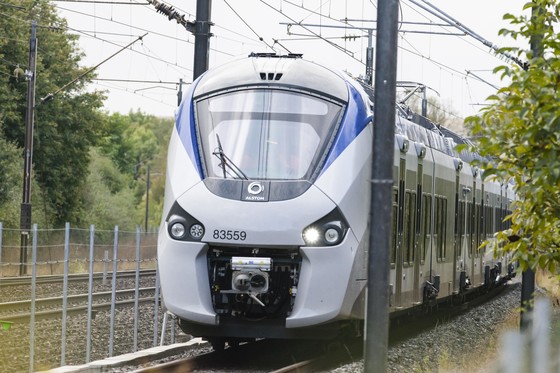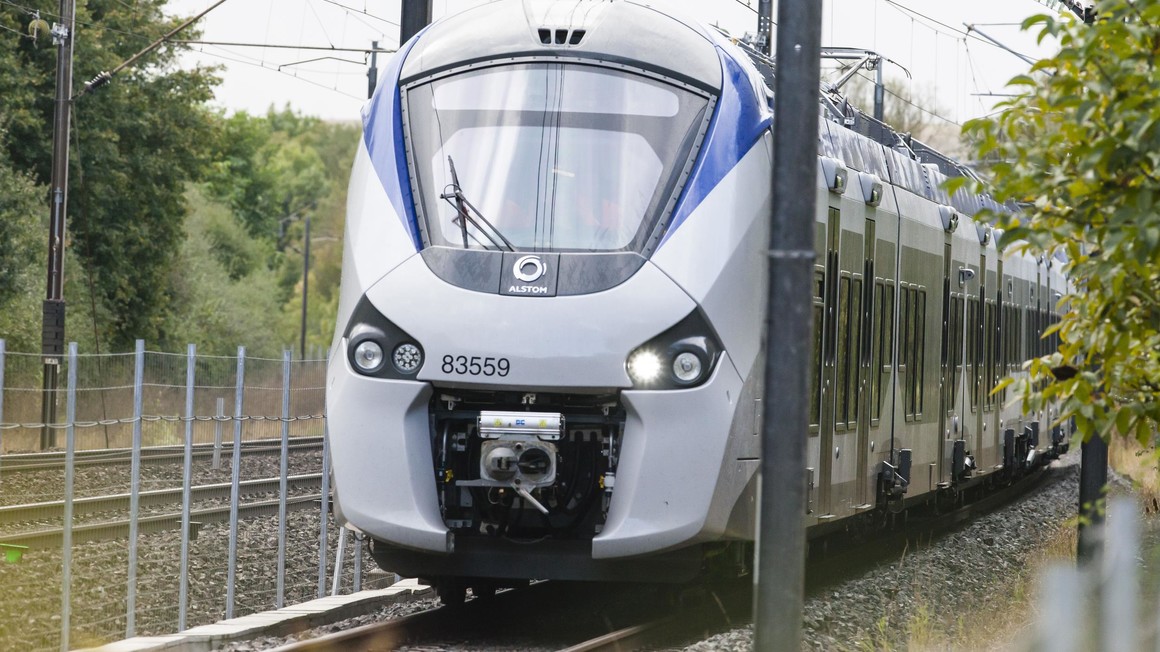
Alstom to supply 39 additional Coradia Polyvalent trains to the Grand Est region, including 30 France-Germany cross-border trains
Alstom to supply 39 additional Coradia Polyvalent trains to the Grand Est region, including 30 France-Germany cross-border trains

Press contact - France Great East
Arnaud Zeisser
Send an emailA contract worth over 360 million euros in France
22 October 2019 – Alstom will supply 39 additional Coradia Polyvalent trains to the Grand Est region for the sum of approximately 360 million euros[1]. The region had already ordered 40 Coradia Polyvalent trains, of which 36 have already been delivered. Deliveries of these new trains will be staggered between 2022 and 2024.
Firstly, this new order covers 30 trains intended for cross-border circulation in Germany. These 4-car trains, which are dual mode - dual voltage 25 kV / 15 kV and comply with German safety requirements, will run at 160 km/h, serving the German states of Saarland, Rhineland-Palatinate and Baden-Württemberg. The 30 Coradia Polyvalent cross-border trains will offer a first-class zone and an area for bicycles, and will incorporate the new TSI PRM[2] 2014 standard, notably offering more spacious toilets to facilitate movement for passengers with reduced mobility. The first cross-border trains will be delivered at the end of 2023.
Secondly, nine additional Coradia Polyvalent trains, consisting of five 4-car and four 6-car trains, have been added to the existing fleet for domestic connections. These new trains will benefit from the same special features as those already in operation in the Grand Est region.
"Alstom is proud of this new sign of trust from the Grand Est region. The expertise and innovation capacities of our French teams are mobilised to support the region in developing cross-border mobility. This order also contributes to the activity of Alstom's Reichshoffen site," says Jean-Baptiste Eyméoud, President of Alstom in France.
Coradia Polyvalent belongs to Alstom's Coradia range of trains. With its modular architecture, it can be adapted to the requirements of each public transport authority as well as to different types of use: suburban, regional and intercity. It comes in three lengths (56, 72 or 110 metres) and offers optimal comfort to passengers, whatever the length of the journey. The train is both ecological and economical due to its low energy consumption, its compliance with the latest emissions standards in thermal mode and its reduced maintenance costs. Coradia Polyvalent is the first French regional train to comply with all European standards, in particular with regard to access for people with reduced mobility.
To date, 387 Coradia Polyvalent trains have been ordered as part of the contract awarded to Alstom by SNCF in October 2009, including 320 Coradia Polyvalent for Régiolis by 9 French regions and 67 Coradia Liner by the French state, the authority responsible for the country’s TET (intercity) trains. Régiolis has already covered nearly 85 million kilometres in commercial service.
The Coradia Polyvalent train also meets the needs of the export market: 17 trains have been ordered by SNTF (Algeria) and 15 trains by APIX (Senegal).
This is Coradia Polyvalent's second cross-border application as the region of Auvergne-Rhône-Alpes has ordered 17 Léman Express Coradia Polyvalent trains, to be commissioned on the CEVA cross-border line between France and Switzerland in mid-December 2019.
The manufacturing of Coradia Polyvalent secures more than 4,000 jobs in France for Alstom and its suppliers. Six of Alstom's 12 sites in France are involved in the project: Reichshoffen for the design and assembly, Ornans for the engines, Le Creusot for the bogies, Tarbes for the traction chains, Villeurbanne for the on-board electronics and signalling products, and Saint-Ouen for the design.
[1] Booked in the second quarter of the current fiscal year
[2] Technical Specifications for Interoperability relating to Persons with Reduced Mobility